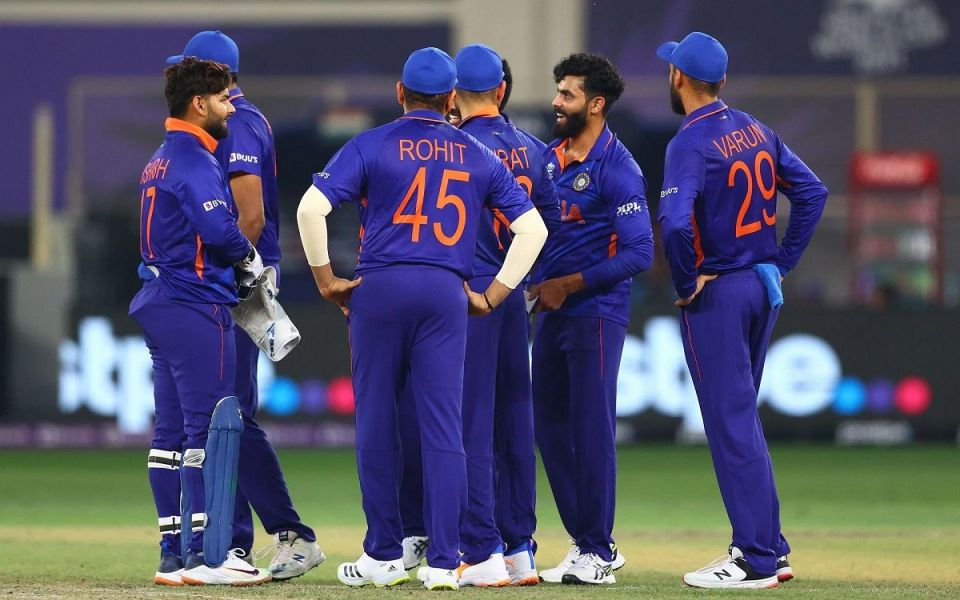
Most of the players who demolished South Africa in Tuesday’s series-decider will not feature in the upcoming T20 World Cup, but everyone seemed to be in a rush to impress if any of the chosen 15 becomes unavailable.
South Africa didn’t know what hit them in Delhi, be it Mohammed Siraj with the short stuff, or the spinners whom the Proteas couldn’t make head or tail of, falling for a paltry 99 in 27.1 overs – their lowest ODI total against India and only the fourth time they had failed to reach three figures in the format.
The home team didn’t break much sweat in securing a seven-wicket win and a 2-1 series triumph, with the match lasting much less than one 50-over inning.
Washington Sundar has emerged as a kind of powerplay specialist and set the tone early by getting Quinton de Kock. Denied pace on the ball which was turning away from him, the left-hander was taken out of his comfort zone and perished trying to force the pace.
Janneman Malan and Reeza Hendricks succumbed to Siraj’s bouncers, ironic for two South African batsmen playing on a pitch not traditionally known for bounce.
Then the tweakers took over. Shahbaz Ahmed seemed like someone who has been playing international cricket for years, rather than someone in just his second ODI. And Kuldeep Yadav against the South African lower order was not a fair contest at all.
As well as the Indians bowled, the visitors didn’t seem to be in the right frame of mind, and having three different captains in the three games of the series may have had something to do with it. Regular white-ball captain Temba Bavuma has been in wretched personal form of late, but the only two victories for South Africa on this visit came under his leadership. Keshav Maharaj and David Miller on Tuesday failed to get the best out of their charges.
Much to ponder
With the T20 World Cup getting underway this week, and looking ahead to white-ball cricket in general, South Africa are left with more questions than answers after their trip to India.
Their batsmen seem to be struggling in anything other than flat batting conditions, while their bowlers – apart from Kagiso Rabada and Keshav Maharaj, both of whom were absent on Tuesday – didn’t put enough pressure on the Indian batsmen for sufficiently long periods of time. ‘Resting’ their pace spearhead for a series decider showed South Africa had other concerns at the forefront of their minds than the immediate game in front of them.
The opening pair was a concern for the hosts going into the decider, and skipper Shikhar Dhawan was out for another low score. His partner at the top, Shubman Gill, made use of the opportunity to spend some useful time in the middle, before falling one short of a half-century when there were just a handful of runs to get.
But the story of the match was the performance of the Indian bowlers, who never let the Proteas off the hook. If they are considered second-string, the first-choice attack couldn’t be expected to do any better. The pitch was tacky and provided some assistance to spinners, but not a minefield as the tourists made it look. Playing the spinners largely on the backfoot and reading the wrist spinner from the pitch only added to their misery.
It doesn’t augur well for the Proteas at the T20 World Cup, as they are grouped with India, Pakistan, and Bangladesh – three teams rich in spin strength – and may even have to face Sri Lanka. They may find solace in the fact that Australian conditions may not be as conducive to the slower bowlers as was the case at the Kotla.
There was a time when South Africa boasted of a batting line-up comprising the likes of Graeme Smith, Hashim Amla, Jacques Kallis, AB de Villiers and Faf du Plessis. It would be fair to say that the present lot seem nowhere near those stalwarts in class, especially in alien conditions. Aiden Markram has shown some quality, but still seems suspect against spin in helpful conditions.
On Tuesday, he was undone by a Shahbaz peach, which landed on a length in the line of the stumps, drawing the batsman into a drive, only for the ball to turn just enough to take the edge on its way into the gloves of wicketkeeper Sanju Samson.
With most batsmen wary of the pitch, their only solace was the pull shot when the spinners erred in length, and that one go-to shot for non-subcontinent batsmen when it starts to turn – the sweep and its reverse variant.
But that was before Kuldeep had his share of the fun with the batsmen, who had no idea of the direction in which the ball would turn. Andile Phehlukwayo swept one for a boundary through square-leg, but failed to read the googly from the chinaman bowler, and chopped on. The wickets of Bjorn Fortuin and Anrich Nortje off successive balls put Kuldeep on a hat-trick, and though Lungi Ngidi averted that, the smile on the bowler’s face showed he was enjoying his day out.
The contrasting fashion in which the hosts went about their paltry chase summed up the difference between the two sides. By the end, one would have had second thoughts about which team had gone into the series almost at full strength and which one had none of its first-choice eleven on display.












